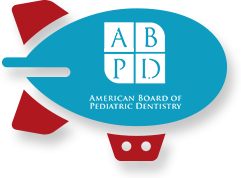How to Avoid Acid Erosion and Protect Your Enamel
March 2nd, 2017

Tooth enamel is the hardest substance in the human body and the first line of defense against cavities and tooth decay. Despite its strength, tooth enamel can be eroded by acid, and leave your teeth susceptible to cavities. But, you can take some simple steps to avoid acid erosion, and strengthen your tooth enamel.
What Causes Enamel to Erode?
Dietary Causes
There are many factors that cause acid erosion, but, most of the damage is done by the foods and drinks that you consume. According to the National Institute of Health (NIH), soft drinks are the most frequent source of erosive acids, due to their high acidity and frequency of consumption. Other drinks like fruit juice, sports drinks and energy drinks can also damage your teeth through acidic erosion.
What does Enamel Erosion look like?
Enamel erosion often results in tooth discoloration, causing teeth to look yellow. It can also cause shiny spots to appear on teeth. People suffering from enamel erosion often report sensitive teeth as their primary symptom.
Bodily Causes
Certain ailments and health conditions can also cause erode your tooth enamel. For instance, women who are pregnant and suffer from morning sickness can experience tooth enamel erosion. This is due to expelling acidic stomach contents. Additionally, people who suffer from gastroesophageal acid reflux disease (GERD) can also experience tooth enamel erosion, since it is a condition that causes stomach acid to involuntary resurface.
Acid Erosion in Children
A recent study found that just over 41% of children in the United States suffer from acid erosion. Unsurprisingly, cavities are the most common disease afflicting children in the United States, and almost completely preventable. Acid erosion in children is largely caused by dietary choices. You can help keep your children’s dental enamel strong, and avoid acid erosion with a few simple methods.
Cut back on Citrus
Food and drinks high in citric acid erode tooth enamel in a process called demineralization. In bad cases of demineralization, acid will work its way to the soft layer beneath the enamel called the dentin. These advanced cases lead to tooth sensitivity and pain.
Drink More Water, Less of Everything Else
Water is a fantastic tool in the fight against acid erosion. Water is not acidic, and does not harm tooth enamel. It also improves saliva production, which naturally cleans teeth of debris and restores the mouth back to a healthy ph balance.
To take it a step further, you and your child should rinse their mouth out with water after each meal. This will wash away any food debris in their mouth, and help prevent cavities.
Add Calcium Rich Foods
Calcium is a dental super mineral. That’s because it neutralizes damaging acids and is a great enamel protector. Try to add at least one dairy product to each of your child’s meals to provide them with adequate amount of calcium. If your family does not consume dairy, try introducing some of these other calcium-rich foods: almond milk, canned fish, kale, soy yogurt or soy beans. If you’re buying packaged food as a calcium source, check the packaging to ensure that there is an adequate amount.
Use Fluoridated Toothpaste
Toothpaste with fluoride strengthens enamel through a process called remineralization. When choosing fluoridated toothpaste, make sure that it has the ADA seal of approval to ensure that it has been rigorously tested and approved.
Visit Our Office
If you’re worried that your child is suffering from enamel loss, then visit our office. Enamel is the first line of defense against cavities and tooth decay, and enamel erosion should be taken seriously. We will evaluate your children’s teeth, and come up with a treatment plan that works for them.




